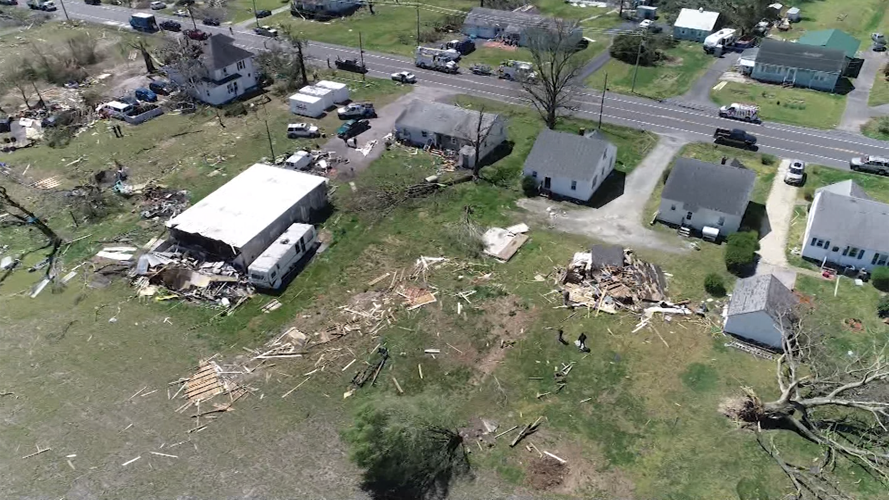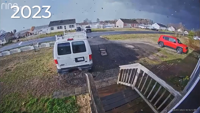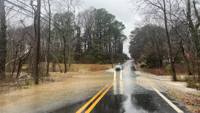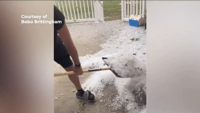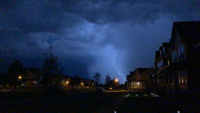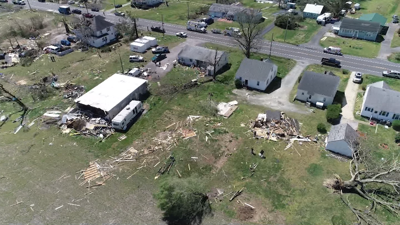DELAWARE - Severe Weather Awareness Week is being acknowledged this week in Delaware. The purpose of Severe Weather Awareness Week is to bring attention to the dangers severe weather poses and how people can better prepare themselves to take on severe weather.
“Severe weather can happen anytime and unfortunately as we have seen far too often in the last few years, Delaware has been very vulnerable to severe weather,” explained Sarah Johnson, the Warning Coordination Meteorologist at the National Weather Service office in Mt. Holly, New Jersey.
As temperatures warm up this spring, the threat of severe weather increases. While Delaware can see severe weather at anytime of the year, the spring and summer is when most of the activity typically occurs. Delaware can experience a range of severe weather, as has been seen in recent years, like tornadoes, damaging winds, hail, and flooding. Lightning, while not typically considered severe weather, also poses a threat to people.
Tornadoes pose a unique threat to people as they can arrive with very little warning. In recent years, Delaware has experienced destructive and deadly tornadoes. In 2019, a series of tornadoes tore across Sussex County with some of the worst damage being experienced in Laurel. In 2023, an EF-3 tornado completely destroyed houses and even killed a man as it tore a path of destruction from Bridgeville through Ellendale. To stay safe in tornadoes, it is vital to heed all warnings. When a tornado warning is issued it is important to immediately seek shelter in a basement or an interior room at the lowest level of a house that contains no windows.

Debris is lifted into the air by a tornado that moved through Ellendale in April 2023.
Damaging winds can be just as destructive as a tornado. Severe Thunderstorm Warnings are issued when damaging winds are expected to exceed 58 miles per hour. At this rate and higher, the winds are strong enough to bring down trees, knock out power, and even cause damage to homes. It becomes extremely important to be indoors in the event of damaging winds. Similar to tornadoes, it is ideal to seek shelter away from windows as debris can be lofted into the air and cause damage to windows.
Hail poses threats to life and property as well. Much of the hail Delaware experiences is below severe limits, which means it is less than 1 inch in diameter. At this size, the hail tends to cause very little damage. The only issue is it will be uncomfortable if you are stuck outside in it. Delaware has experienced larger hail events though. In recent years, hail events in the Laurel and Seaford area caused damage to siding in houses, car windshields, and even some damage to crops.

Hail piles high on a porch in May 2022.
Flooding can impact Delaware in various ways. Coastal flooding can occur during coastal storms, tropical storms, and even on sunny days. Inland flooding occurs during heavy rain events. One of the largest inland flooding events in Delaware occurred in Seaford in June of 2006. Training thunderstorms produced rainfall totals in excess of 10 inches which washed out roads, flooded homes, and even threatened the integrity of the dam located across from TidalHealth Nanticoke. During a flood event, it becomes important to follow the phrase “Turn around, don’t drown.” It only takes 6 inches of water to knock a person off their feet, 1 foot of water can float a car, and 2 feet of moving water can move even large vehicles off the road.

Floodwaters rush over a road in Milton in December 2023.
Lightning occurs frequently during the spring and summer. Lightning, while not looked at when issuing Severe Thunderstorm Warnings, can be the most dangerous aspect of storms, causing on average over 40 deaths in the United States per year. If caught outside in a thunderstorm, it is important to seek shelter immediately. Standing under trees is never a safe shelter as lightning can strike the tree along with surrounding objects and people.

A bolt of lightning strikes the ground during a storm in July 2020.
Severe weather poses many threats in Delaware. It is vital to make a plan, build a kit, and stay informed to stay safe in the event of severe weather. Making a plan should consist of planning what to do before, during, and after a severe weather event. Building an emergency preparedness kit should include enough non-perishable food and water for several days, a First-Aid kit, flashlights, batteries, and various other items. Staying informed entails having a way to receive weather alerts and preferable multiple ways to receive alerts. Some ways to stay informed consist of turning on EAS alerts on your phone, downloading our CoastTV First Alert Weather app, and watching CoastTV News.
If you would like more tips on how to make a plan, build a kit, and stay informed head over to PrepareDE.org.






